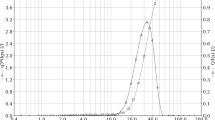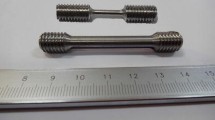Abstract
The impact of moisture on flowability and spreadability is discussed. More notably we also present research on the impact of moisture on built nickel-base material. One lot of a newly opened Hastelloy X (HX) L‑PBF powder was split into two equal batches. One batch was moisturized using a programmable climate chamber, the other was untreated. We built bars with both batches for mechanical testing, in an EOS M100, with a cold build plate. The moisture content of the two powder batches, before and after the build-jobs, were determined using Karl Fischer titration (KF). Regarding the periodical monitoring of moisture content, it is not needed according to the findings of this paper. More moisture contributes to a slightly higher O‑content in the built material, and in turn, a very slight reduction in impact toughness. If a newly purchased powder exhibits poor flowability or high oxygen content, the analysis using oven-desorption followed by KF is recommended. If the moisture content is high, a drying of the powder is recommended.
Zusammenfassung
Der Einfluss von Feuchtigkeit auf die Fließfähigkeit und Verteilbarkeit wird diskutiert. Insbesonders präsentieren wir unsere Forschung zum Einfluss von Feuchtigkeit auf mittels L‑PBF gefertigtes Nickel-Basis-Material. Eine Charge von frisch geöffnetem Hastelloy X (HX) L‑PBF Pulver wurde in zwei gleiche Proben geteilt. Eine Probe wurde mittels einer programmierbaren Klimakammer befeuchtet, während die andere Probe unbehandelt blieb. Aus beiden Pulverproben haben wir in einer EOS M100-Maschine unter Verwendung einer kalten Bauplatte Probestäbe zur mechanischen Prüfung hergestellt. Der Feuchtigkeitsgehalt beider Pulverproben vor und nach den Bauprozessen wurde mittels Karl Fischer Titration (KF) bestimmt. Gemäß den Ergebnissen dieses Beitrags ist eine regelmäßige Überprüfung des Feuchtigkeitsgehaltes nicht erforderlich. Mehr Feuchtigkeit trägt zu einem leicht erhöhten Sauerstoffgehalt im mittels L‑PBF hergestellten Material bei, welcher seinerseits die Kerbschlagzähigkeit leicht reduziert. Bei Verdacht auf Beeinflussung eines neu erworbenen Pulvers wird eine Analyse mittels Ofendesorption und anschließender Karl Fischer Titration empfohlen.














Similar content being viewed by others
References
Cordova, L.; Campos, M.; Tinga, T.: Assessment of Moisture Content and Its Influence on Laser Beam Melting Feedstock. Proc. Euro PM20217 Congress & Exhibition, Italy, 2017
Bauer, D.: Investigations on Aging Behaviour of Aluminum Powders During a Lifetime Simulation for the LBM Process. Powder Metall. 60 (2017), pp 175–183
Cordova, L.; Bor, T.; de Smit, M.; Campos, M.; Tinga, T.: Measuring the spreadability of pre-treated and moisturized powders for laser powder bed fusion, J. of Additive manufacturing, 32 (2020), 101082
Marchetti, L.; Mellin, P.; Hulme-Smith, C.: Effects of Humidity On The Flowability Of Steel Powders, Proc. Euro PM2020 Congress & Exhibition, Portugal, 2020
Mellin, P.; Zavalis, T.; Tingö, L.; Brodin, H.; Wendel, J.; Berg, S.; Riabov, D.; Strondl, A.; Nyborg, L.: Moisture content analysis of metal powders, using oven desorption followed by Karl Fischer titration, Metal Powder Report, 75 (2019), p 34
Acknowledgements
This work was made possible by financial support from the Swedish Governmental Agency for Innovation Systems (Vinnova), project number 2017-01265 and 2019-01087.
Author information
Authors and Affiliations
Corresponding author
Additional information
Publisher’s Note
Springer Nature remains neutral with regard to jurisdictional claims in published maps and institutional affiliations.
Rights and permissions
About this article
Cite this article
Mellin, P., Rashidi, M., Fischer, M. et al. Moisture in Metal Powder and Its Implication for Processability in L-PBF and Elsewhere. Berg Huettenmaenn Monatsh 166, 33–39 (2021). https://doi.org/10.1007/s00501-020-01070-2
Received:
Accepted:
Published:
Issue Date:
DOI: https://doi.org/10.1007/s00501-020-01070-2




